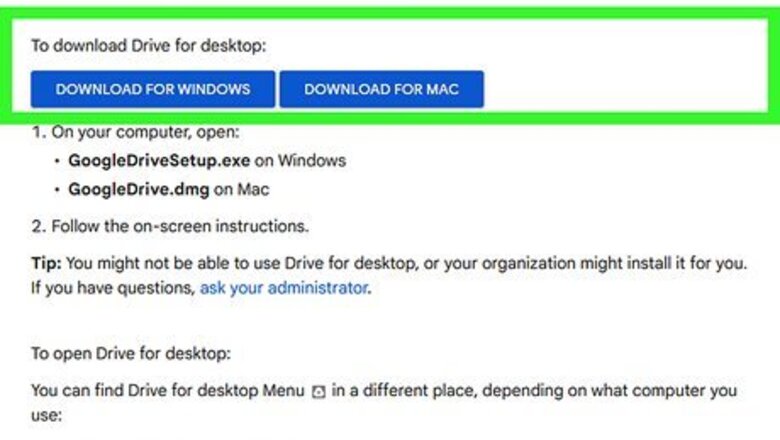
views
- You can sync folders and files over the cloud using cloud storage apps like Google Drive, and Dropbox.
- You can use FreeFileSync to sync a folder to another local folder or flash drive.
- You can share folders with other computers on the same network to allow access and changes.
Using Google Drive

Download Google Drive for desktop. Alternatively, you can use the web-based version of Google Drive. You get 15 GB of Google Drive storage free when you sign up for a Google account. You can upgrade your plan if you need more storage. Use the following steps to download and install Google Drive for desktop: Go to https://support.google.com/a/users/answer/13022292?hl=en in a web browser. Click Download for Windows or Download for Mac. Open the GoogleDriveSetup.exe file on Windows or GoogleDrive.dmg on your Mac. Follow the instructions to complete the installation and sign in to your Google account.
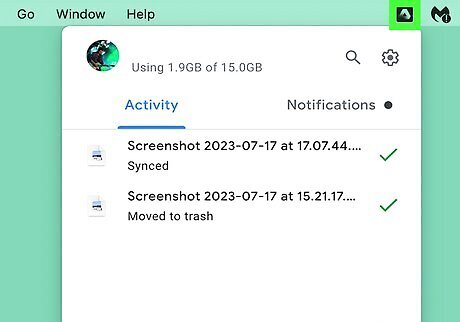
Open the Google Drive app. Once installed, you'll find Google Drive at the top-right corner of your screen on a Mac, or in your Windows system tray, which is near the clock at the bottom-right corner of the screen. If you don't see the Google Drive icon on Windows, click ^ to the left of the clock to expand more options.
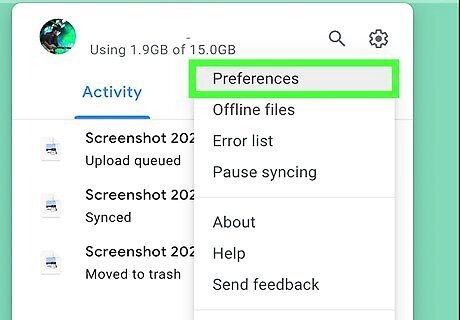
Click the gear icon and select Preferences. The gear icon is at the top-right corner of the window.
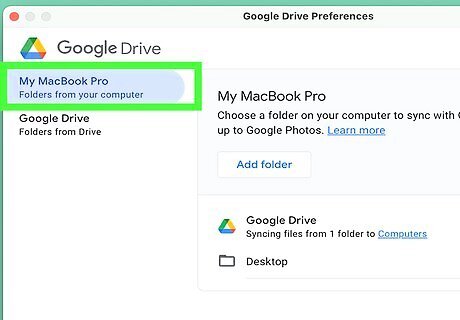
Click Folders from your computer. It's in the left panel.

Click the Add folder button. You can also navigate to a folder in File Explorer or Finder, right-click the folder name, choose Sync or Back Up this Folder to open this menu.
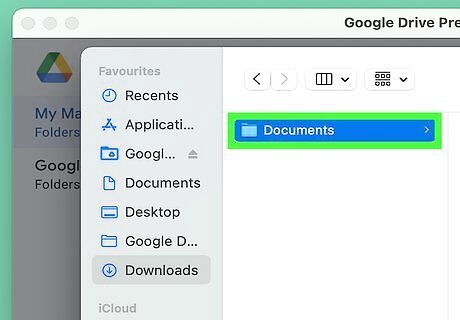
Select the folder you want to sync. Click the folder you want to synchronize, and then click Select Folder to select it.

Check "Sync with Google Drive" and click Done. This adds the folder to the list of folders to synchronize. If the folder contains only photos and/or videos, you can choose to back up it up to Google Photos instead.

Click Save to synchronize the folder. This will sync the folder with your Google Drive account. You can access your synchronized folder online at https://drive.google.com/, using the Google Drive mobile app on your Android, iPhone, or iPad, or by installing Google Drive on another computer and signing in with the same account. When accessing your synchronized folder on another device, you'll find it under your computer name in the "Computers" section of Google Drive. Once a folder is synced, any changes you make to the folder on your computer will be reflected in Google Drive.
Using OneDrive
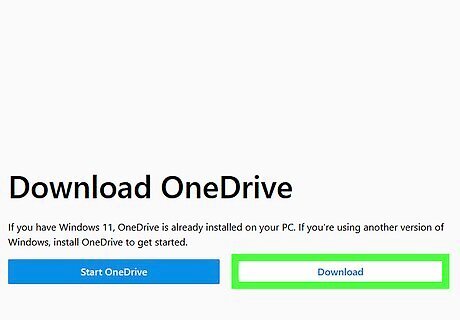
Install OneDrive on your PC or Mac. If you're using Windows 11, OneDrive comes preinstalled on your PC. If you're using Windows 10 and earlier or a Mac, you'll need to download OneDrive from https://www.microsoft.com/en-us/microsoft-365/onedrive/download. Once downloaded, double-click the downloaded file and follow the on-screen instructions to install. You can synchronize folders to OneDrive on both Windows and macOS. Synced folders will be accessible at https://www.onedrive.com and anywhere you install OneDrive, including in the OneDrive app for Android, iPhone, and iPad.

Open your OneDrive settings. Once OneDrive is installed, open it and navigate to your Account settings. The steps are a little different on each platform: Windows: Click the gear icon and select Settings. Mac: Click the three horizontal dots and select Preferences.
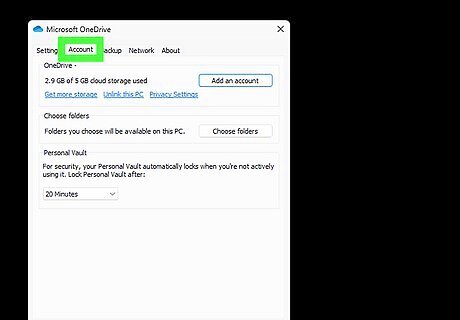
Click the Account tab. It's in the left panel on a PC, and at the top on a Mac.

Sign in to your Microsoft account. If you already see your Microsoft account under "Account," you can skip this step. If not, click Add an account, then log in. If you don't have a Microsoft account, you can create one for free.

Choose a location for your OneDrive folder. If you're just setting up OneDrive for the first time, you'll see the default location of your OneDrive folder. You can change the location if you'd like by clicking Change Location. Otherwise, click Next to continue. If you've already signed in to OneDrive and don't see this screen, just skip to the next step. Any files and folders you add to your OneDrive folder will automatically sync to OneDrive.
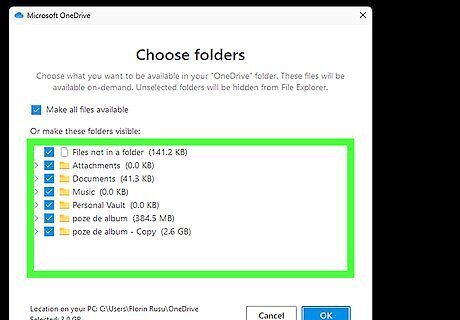
Choose which files to sync back to your computer. If you're setting up OneDrive for the first time, you'll see a list of folders to sync to your PC or Mac. If you don’t see this list, click the Choose folders button on the Account tab to open it. Then, check the boxes next to each folder that you want to keep synced to this computer.
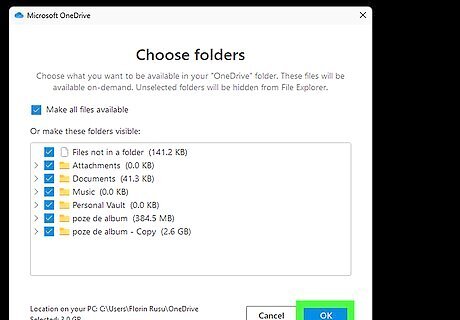
Click Next or OK. This syncs the selected folders to the cloud. if you sign in to a Windows 11 PC using the same Microsoft account that you used to synchronize these folders, you can open OneDrive on that PC and choose which folders to sync by clicking the gear > Settings > Account > Choose folders.
Using iCloud on a Mac

Open System Settings or System Preferences. Click the Apple menu and select System Settings (Ventura and later) or System Preferences (Monterey and earlier). You can sync your Desktop, Documents, and Folders to the iCloud so you can access the folder on your other devices. Synced folders will be available in the Files app on your iPhone or iPad, or on any other computer on which you sign in to iCloud using the same Apple ID. When you sign up for an Apple ID, you get 5 GB of iCloud storage for free. You can upgrade to iCloud+ if you need more storage space.
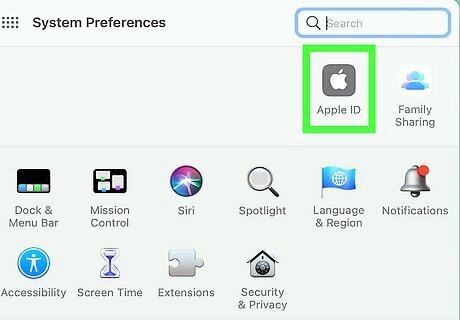
Click Apple ID. This opens your iCloud settings.
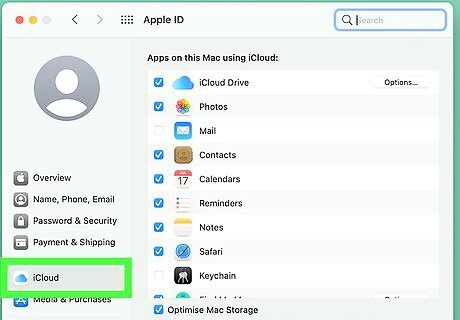
Click iCloud. It's in the Apple ID menu. If iCloud Drive is not turned on, click the checkbox to turn it on now.
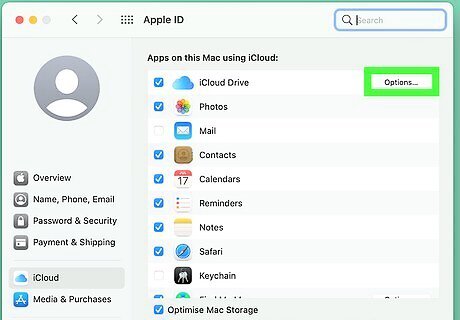
Click Options next to "iCloud Drive."

Check the box next to "Desktop & Documents Folders." This ensures that you can synchronize folders from both your Mac's desktop and your Documents folder to other devices using iCloud. You cannot sync individual folders. However, you can copy and paste an individual folder onto your desktop or into your Documents folder to make sure it stays synchronized.

Click Done. All the files and folders on your Desktop and in your Documents folder will now sync to iCloud. You can access your folders and files using the iCloud drive in the Finder on a Mac when signed in, or in the Files app on your iPhone or iPad.
Using Dropbox

Download the Dropbox app. You can sync folders to your Dropbox account using the desktop app on your computer. Use the following steps to download and install the app: Go to https://www.dropbox.com/desktop in a web browser. Click Download Now. Open the DropboxInstaller file in your Downloads folder. Follow the instructions to complete the installation.

Sign in to your Dropbox account. If you haven't already done so, go ahead and sign up for a Dropbox account. You can do so at https://www.dropbox.com/register. Then log in to the Dropbox app using the username and password associated with your Dropbox account. You can sign up for a free account which comes with 2 GB of storage space. If you need more space, you can upgrade to a Standard, Plus, or Professional account.
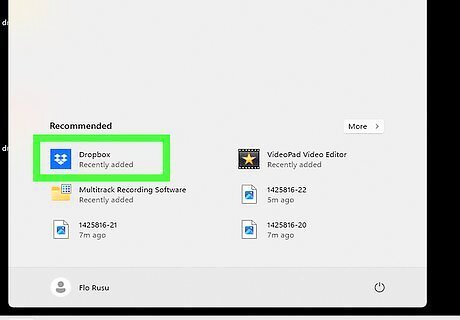
Click the Dropbox icon. It's the blue box on the taskbar (Windows) or in the menu bar (Mac). If you don't see the Dropbox icon in the Windows taskbar, click the bracket icon pointing up next to the time and date to display more icons.

Click your profile icon or initials and select Preferences.

Click the Sync tab. It's at the top of the menu.

Click Select Folders. It'll be under "Select Sync" on Windows or "Select folders to sync to this Mac" on Mac.
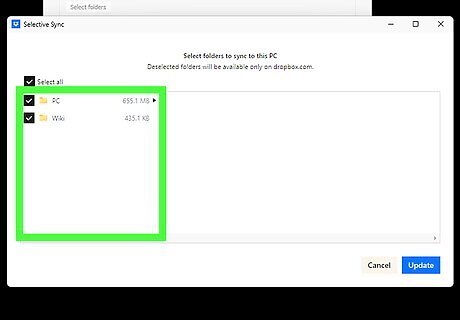
Click the checkbox next to the folders you want to sync. Check the folders you want to sync to your Dropbox account.
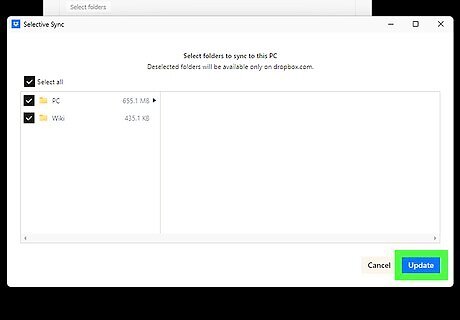
Click Update. All the folders you selected will sync with your Dropbox account automatically. You can access the folders in your Dropbox account by clicking the Dropbox icon in Windows Explorer, or the Finder on Mac. You can also access your folders by signing into your Dropbox account on the official website or by using the Dropbox app on your mobile device.
Using FreeFileSync

Download FreeFileSync. Go to the FreeFileSync website at https://freefilesync.org/, click the green Download button near the bottom of the window, scroll down to the "Download FreeFileSync" heading, and click the link for your operating system. For example, you'll click Download FreeFileSync 10.0 Windows Setup for Windows or Download FreeFileSync 10.0 macOS for a Mac.

Install FreeFileSync. Depending on whether you use Windows or a Mac computer, this process will vary: Windows — Double-click the downloaded EXE file, click Yes when prompted, and click Next until the installation begins. Mac — Double-click the downloaded ZIP folder to open and extract it, double-click the PKG file in the extracted folder, and follow any on-screen instructions.

Plug removable storage into your computer if necessary. If you want to synchronize your files to a USB flash drive or external hard drive so that any changes you make to the folder will automatically synchronize when the drive is connected, plug the removable storage into one of your computer's USB ports. Skip this step if you just want to synchronize the folder with a different folder on your computer. On a Mac, you'll need a USB-C (Thunderbolt 3) flash drive or external hard drive, or a USB 3.0 to USB-C adapter.
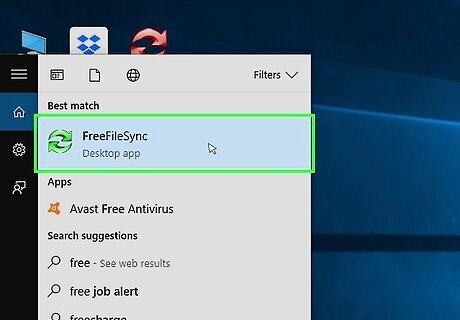
Open FreeFileSync. Double-click the FreeFileSync app icon, which resembles two green arrows circling, to do so. The FreeFileSync window will pop up.

Add the folder from which you want to synchronize files. Above the middle section of the FreeFileSync window, click Browse, then go to the folder from which you want to synchronize files, click it, and click Select Folder. On a Mac, you'll click Choose instead.

Add a synchronization location. This is the location to which your folder's files will sync (e.g., your flash drive). Click Browse above the right-most section of the FreeFileSync window, click the folder or storage item you want to use, and click Select Folder (Windows) or Choose (Mac).
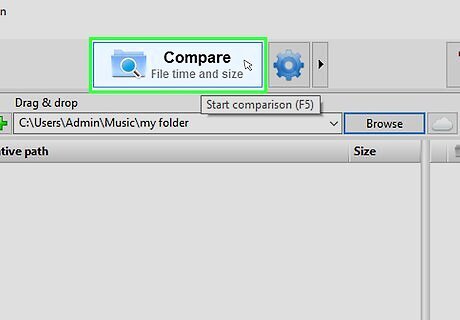
Click Compare. It's above the first folder's column. Doing so brings up a list of the files in each location.
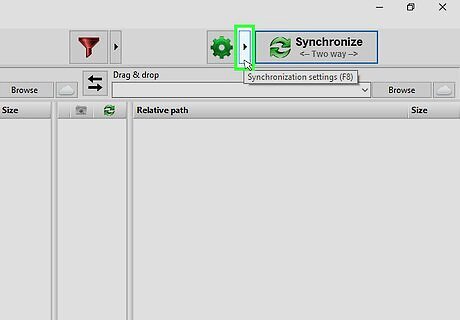
Click the triangle to the right of the green gear icon. This icon is above the column for the storage item or folder to which you want to synchronize your folders. A drop-down menu will appear.

Click Mirror ->. It's in the drop-down menu. The Mirror option ensures that any files from your first folder will automatically be copied into the second location. Keep in mind that any files in the second location which don't already match files in the first location will be deleted when you do this. If you want to synchronize the folders both ways so that no files are deleted, click <- Two way -> instead.

Click Synchronize. This is in the upper-right side of the window.

Click Start when prompted. Your first location's files will begin copying to the second location.

Save your FreeFileSync configuration. If you want to synchronize your folders in the future, you'll need to save the settings to a configuration file by doing the following: Click the green, circular arrow-shaped Save As icon in the upper-left side of the window. Enter a name for your configuration. Select a save location. Click Save
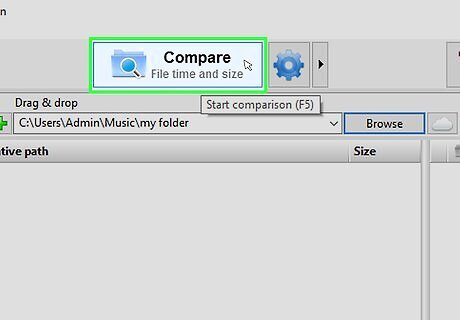
Run the synchronization again when needed. When it comes time to re-synchronize your folder with your selected synchronization location, find and double-click the configuration file that you saved. This will open FreeFileSync and run the synchronization process. If you move or change the name of either your folder or the removable storage you use, the file synchronization won't work and you'll have to redo the configuration.
Sharing Folders on Windows
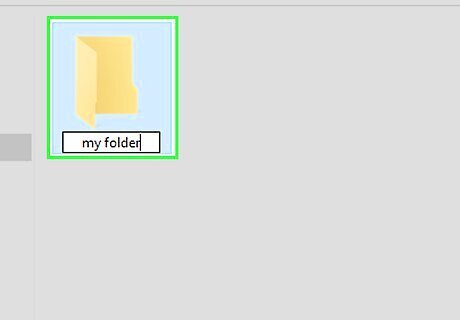
Create the folder that you want to synchronize if necessary. If you want to synchronize a new folder rather than an existing folder, create a folder by doing the following: Go to the location in which you want to create the folder (e.g., the desktop). Right-click an empty space. Select New Click Folder Type in a name. Press ↵ Enter. Add files to the folder by dragging and dropping them onto the folder's icon.
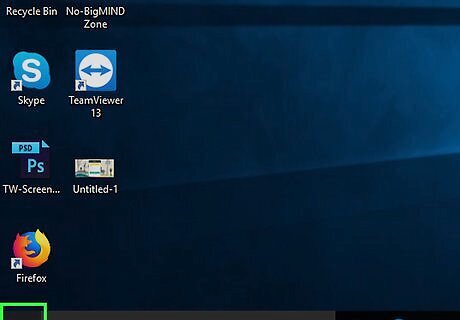
Open Start Windows Start. Click the Windows logo in the bottom-left corner of the screen. The Start menu will pop up.

Open File Explorer Windows Start Explorer. Click the folder-shaped icon in the lower-left side of the Start menu.
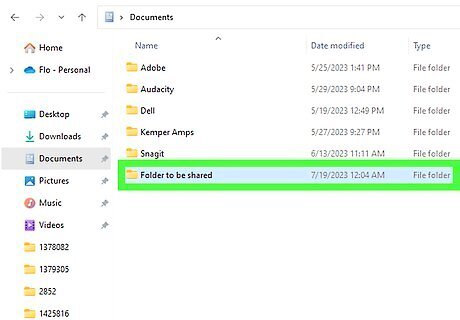
Right-click the folder you want to share. This displays a context menu.
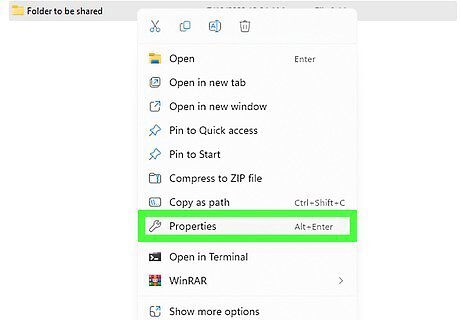
Click Properties. It's at the bottom of the menu that pops up when you right-click a folder.
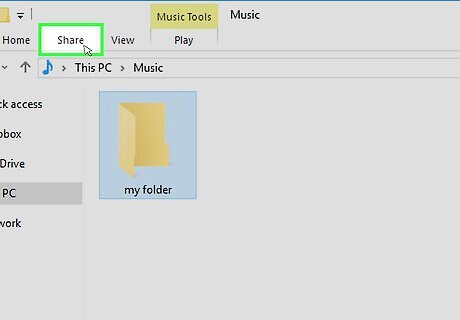
Click the Share tab. It's in the upper-left side of the folder. Doing so prompts a toolbar to appear at the top of the window.

Click Specific people…. You'll find this option in the "Sharing" section of the toolbar. Clicking it prompts a new window to open.

Click the Android 7 Expand More drop-down box. It's near the top of the window. A drop-down menu will appear.
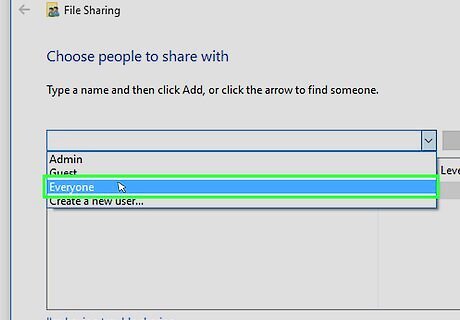
Click Everyone. This option is in the drop-down menu.
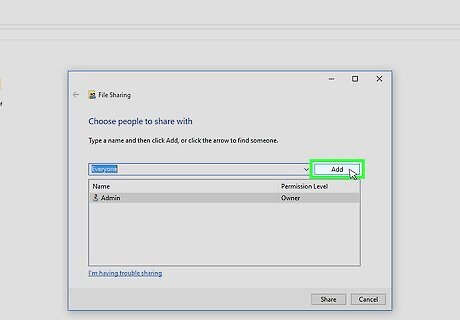
Click Add. It's to the right of the drop-down box. Doing so enables folder access for anyone on your network for your selected folder.

Allow others to add or remove files. Click Read ▼ to the right of Everyone, then click Read/Write in the resulting menu.

Click Share. This option is at the bottom of the window.
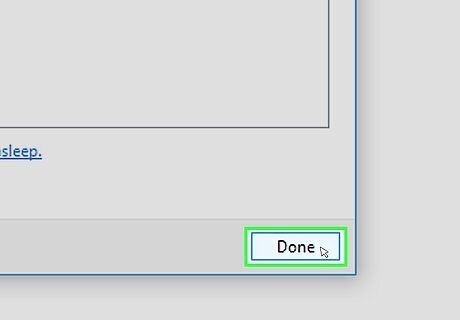
Click Done. It's at the bottom of the window. This will close the window, signifying that your folder is now being shared with other computers on your network.

Make sure that the other computer is on your network. In order to synchronize the folder between your two computers, both computers must be on the same wireless network. If the computer with which you want to synchronize files isn't on the same network, connect it to the same network before proceeding. You can check your computer's current network by clicking the Wi-Fi icon in the lower-right side of the screen (Windows) or the Wi-Fi Mac Wifi icon in the upper-right corner of the screen (Mac) and looking at the top network name. This will work if your computers are both on the same wired (Ethernet) network as well.
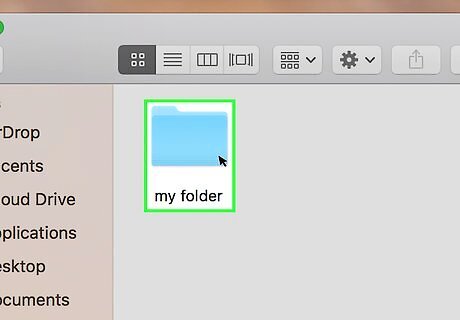
Access the shared folder from the other computer. Once you've shared the folder, the other computer should be able to view the folder's contents and add files to (or remove files from) the folder: Windows — Open File Explorer, click the other PC's name in the left-hand column of folders (you may need to scroll down first), and open the folder. Mac — Open Finder, click your PC's name in the lower-left side of the window, and open the folder.
Sharing Folders on Mac
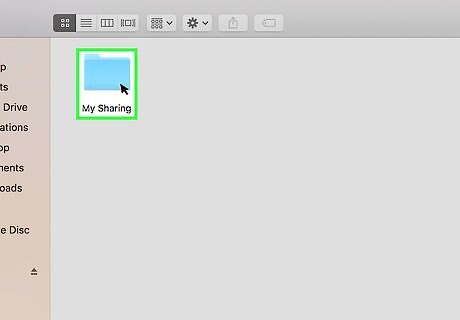
Create the folder that you want to synchronize if necessary. If you want to synchronize a new folder rather than an existing folder, create a folder by doing the following: Go to the location in which you want to create the folder (e.g., the desktop). Click File Click New Folder Type in a name for your folder. Press ⏎ Return. Add files to the folder by dragging and dropping them onto the folder's icon.

Open the Apple menu Mac Apple. Click the Apple logo in the top-left corner of the screen. A drop-down menu will appear.

Click System Settings or System Preferences…. It's near the top of the drop-down menu. Doing so opens the System Preferences window.
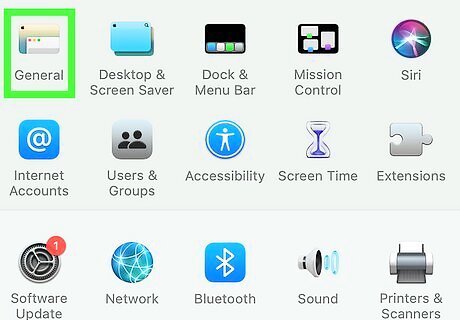
Click General. It's at the top of the System Settings menu.

Click Sharing. It's in the General menu. This opens the Sharing menu.
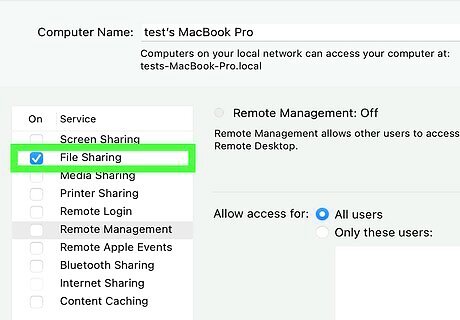
Toggle File Sharing on. To do so, click the toggle switch next to the "File Sharing" icon.

Click the "i" icon next to File Sharing. It's to the right of the File Sharing toggle switch. This will create a new public folder with your username.
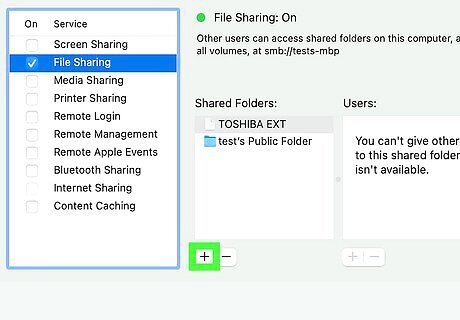
Click +. It's beneath the Folders window.

Select a folder you want to share and click Add. Use the Finder window to navigate to the folder you want to share, click it to select it. Then click Add in the lower-right corner. This adds the folder as a publicly shared folder.

Access the shared folder from the other computer. Once you've shared the folder, the other computer should be able to view the folder's contents and add files to (or remove files from) the folder: Windows — Open File Explorer, click the other PC's name in the left-hand column of folders (you may need to scroll down first), and open the folder. Mac — Open Finder, click your PC's name in the lower-left side of the window, and open the folder.



















Comments
0 comment